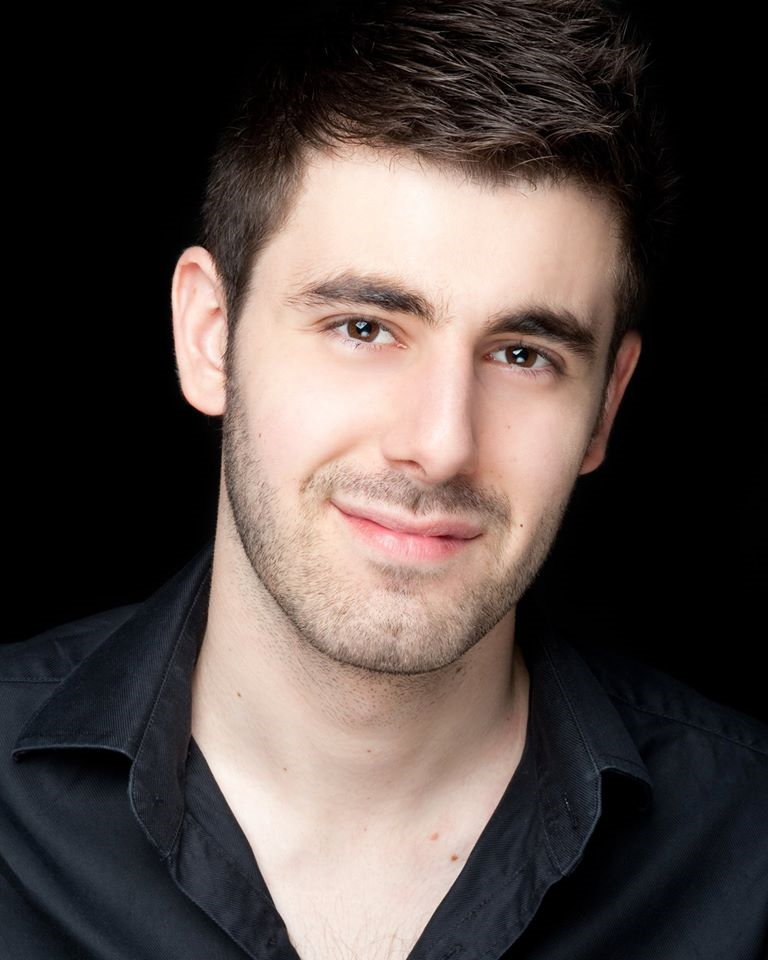THE NIGHT SKY GLORY
Move Records MCD 650

The good people at Move have just published three CDs devoted to the work of Australian composer Lachlan Brown who – as far as the internet is concerned – remains an enigma. That is to say, I can’t find any information about him apart from what is on the Move website – and that’s very meagre. So you’d have to expect something out of the box from a writer who manages to get the country’s prime Australian composition promoter to publish a set of recordings – put out simultaneously, what’s more – that features a performing group involving some high-profile musicians.
This first offering features pianist Len Vorster, soprano Jenna Roubos, soprano/altos Holly Haines and Alison Rae-Jones and Elspeth Bawden, treble Jimmy Hilton, tenors Timothy Reynolds and Alastair Cooper-Golec and Lyndon Green, the composer himself doubling as tenor and bass, harp Megan Reeve, violins George Vi and Marianne Rothschild, viola Karen Columbine, cello Michelle John, and organ Lachlan Redd. As you can see, some of these participants have been (and continue to be) significant members of the country’s (mainly Melbourne’s) musical community.
But what of the music they reproduce? One of the few ‘facts’ we can learn about Brown is that he has been influenced by Mahler, Sibelius, Debussy, Delius and Faure: a worthy clutch of late Romantic and Impressionist writers – in fact, a few of them sit on the cusp between those schools/groups/ delineations. But I become instantly wary when such names are presented, chiefly because I suspect that what we are going to hear is derivative – not so much influences as imitations. Further, is any composer in current operation harking back this far? All pay homage to Bach, but is anyone writing continuously in his style? Or that of Beethoven? Or Wagner? Still, you could pursue this topic into odd corners where composers are happy to boast an affinity with Schoenberg or Stravinsky (but never Hindemith), while the fad for Cage, Stockhausen or Boulez is well and truly over. Now, the trend is towards Radiohead, Philip Glass or Lady Gaga.
Back to Brown and his first track. a Rilke setting: Fruhling ist wiedergekommen which is the 21st of the Sonnets to Orpheus, here carried out by Roubos and Vorster. Well, it’s sort of that particular sonnet with the first part revisited at the end for the sake of balance, I suppose, and a few lines and a stanza, at least omitted. The musical language is a cross between 19th century operatic cadenza and post-Schumann lied, both A parts of this ternary composition opening with a sort of vocalise. This is amiable, salonesque music which manages to sound open-hearted and optimistic, like the poem.
Vorster and tenor Cooper-Golec then present a Victor Hugo setting: Hier soir, which is fully Romantic but lacking in subtlety. It’s as if Baudelaire had never been born. As for the setting, it treads a conservative line in chromatic sliding, except for some questionable moments at the end of the first stanza. Cooper-Golec’s tiumbre is a touch over-nasal for a piece that might have been better suited to a baritone; as it is, the song sounds like a kind of plaint rather than an assertion of devotion. The whole reminds me of Duparc but without much attraction in its melodic curve.
Brown then takes on a well-known set of verses in Heine’s Auf Flugeln des Gesanges, forever associated with Mendelssohn who set the poem in his Op. 34 Six Songs. This new version employs two tenors – Reynolds and Green – with the string quartet mentioned above, the lower strings pizzicato while Vi weaves a third line around the intertwining vocal chain of 3rds and 6ths. It’s very mellifluous and just as richly conservative as Mendelssohn’s work in its vocal demands and its harmonic vocabulary.
Next come a pair of actual vocalises. The first involves Roubos and harpist Reeve and is an amiable enough exercise with a fetching vocal line above instrumental arpeggios, mainly (always?) rising. Brown stays fixed in a completely predictable metre with a few gestures towards late French Romantic modernity. To their credit, both artists handle this slender piece with sympathy. The second uses the boy treble Hilton with Redd providing supporting chords on an unattributed organ while the singer follows a melodic path of no particular character, alternating a step-wise melodic motion and a widely-spaced arpeggio three-note pattern. Again, there’s nothing here that speaks to any of Brown’s influencers, except possibly some suggestions of Faure of the Requiem.
Rilke enjoys another outing through Schon horch, also from the Orphean sonnets – No. 25 in the cycle – and Cooper-Golec and Vorster return for this number. Here we might be stepping into the 20th century with some efficient Delian slides and a setting of some drama, particularly for the singer who is tested across a wide tessitura. If it suggests anything, it’s one of Berg’s early songs, chiefly for the solidity of its piano material. But I can’t find much of a link between the text and the music; my fault, of course, that I never embraced the German poet’s taxing imagery.
We now arrive at the CD’s title-work, which is another vocalise for what I assume are multi-track voices. Only two are cited. Haines and Brown. but both are credited with double vocal types: soprano/alto, and tenor/bass. What we hear is a series of four-part (or are there more?) chords, revolving around a mobile axis in yet another very circumscribed harmonic ramble. Again, you’re reminded of Delius in a vague sense, but I don’t know the English master’s choral scores well enough to play pinpoint the similarity.
The composer is still indulging in vocalise for the next three tracks: Meditations for choir III, IV and V. The pairs of singers (each contributing at least two vocal strands) have no words, just an open vowel sound as they slowly meander around a rather ordinary sequence of chords. Rae-Jones and Brown are the personnel for the first two of this clutch, the No IV having more interest for the momentary individuality of line at its centre. The last, involving Bawden and Brown, builds slowly to a fine climax, and impressed for its multi-choral effects, but by this point my attention was wandering in an aural landscape where the elements were proving interchangeable..
More harmonic originality appears in a brace of Forest Voices from multi-phonicised Haines and Brown, still textless. The writing is loaded with droning open 5ths and some biting 2nds and 7ths that speak a language that is more contemporary than anything we’ve come across this far. Further, these pieces have a definite atmosphere: the forest they depict is no sweetly-wooded series of groves but something more menacing and aggressive.
To end, we have Night Falls in the Forest which continues the atmospheric suggestions of the preceding two tracks but much less stridently. Bawden’s soprano and alto have the melodic running although Brown’s tenor and bass are not stuck in the subsidiary positions they held in the Voices tracks. But seven tracks in a row of harmonic shifts and vocalisations seems to me to be too much of a moderately good thing.
When facing modern composition, I’m still sympathetic to Stockhausen’s saying that he asks ‘two things of a composer: invention, and that he astonish me.’ That’s still a tall order which might be more useful if the combination was actually a pair of alternatives. Brown’s music is not impressive for its inventiveness but moves along well-trodden paths, compositional tropes that are very common territory. Much of it is pleasant and deft in its organization but it ignores most of what has happened in Western music over the last 120 years. As for the question of astonishment, it does not arise. Nevertheless, I’m looking forward to experiencing further facets of the composer’s creativity in the other two Move CDs that were issued alongside this one.





